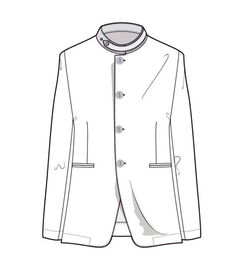服装设计男女比例1:1什么意思
- 经验
- 2024-05-14
- 701
Title: Understanding Gender Ratios in Fashion Design
In the realm of fashion design, the balance between catering to male and female consumers is a nuanced art. Understanding the dynamics of gender ratios is crucial for designing collections that resonate with diverse audiences. Let's delve into this topic to explore its intricacies and implications.
1. Market Analysis:
Before embarking on any design endeavor, it's essential to conduct a comprehensive market analysis. This involves examining the demographics, preferences, and purchasing behaviors of both male and female consumers. Traditionally, the fashion industry has predominantly focused on women's wear, attributing it to the perception that women are more fashionconscious and inclined to spend on clothing. However, recent trends indicate a shifting landscape, with men becoming increasingly invested in personal style and grooming.
2. Gender Ratio Trends:
Historically, women's wear has dominated the fashion industry, with a higher proportion of designers specializing in this segment. This trend can be attributed to societal norms and cultural constructs surrounding femininity and beauty. However, in recent years, there has been a notable surge in men's fashion, fueled by changing attitudes towards masculinity and selfexpression. As a result, the gender ratio in fashion design is gradually approaching equilibrium, with more designers venturing into menswear.
3. Design Considerations:
When designing for different genders, it's essential to consider their distinct preferences, body types, and style sensibilities. Women's clothing often emphasizes versatility, creativity, and experimentation with colors and silhouettes. In contrast, men's fashion tends to focus on functionality, simplicity, and classic aesthetics. However, these are generalizations, and there is a growing demand for genderneutral or unisex designs that defy traditional categorizations.
4. Inclusivity and Diversity:
One of the most significant shifts in contemporary fashion is the emphasis on inclusivity and diversity. Designers are increasingly mindful of representing a spectrum of gender identities and body types in their collections. This entails breaking away from rigid gender norms and stereotypes and embracing fluidity and individuality. By adopting a more inclusive approach, designers can reach a broader audience and foster a sense of belonging within their community.
5. Marketing Strategies:
Effective marketing strategies play a pivotal role in engaging both male and female consumers. This involves leveraging various channels such as social media, influencer collaborations, and experiential events to create buzz around the brand. Tailoring marketing campaigns to resonate with the unique interests and aspirations of each gender segment can yield favorable results and foster brand loyalty.
6. Future Outlook:

Looking ahead, the future of fashion design is poised to be increasingly genderinclusive and fluid. As societal norms evolve and barriers are dismantled, designers have a unique opportunity to push boundaries and challenge conventions. By embracing diversity, fostering creativity, and prioritizing inclusivity, the fashion industry can become a catalyst for positive social change.
In conclusion, the gender ratio in fashion design is undergoing a transformation, with a growing recognition of the importance of catering to diverse audiences. By understanding market dynamics, embracing inclusivity, and tailoring designs and marketing strategies accordingly, designers can navigate this evolving landscape successfully. Ultimately, fashion should be a reflection of individuality and expression, transcending gender boundaries and empowering individuals to embrace their authentic selves.